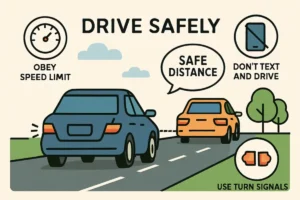I once clicked a checkbox while filling out online forms, only to second-guessed myself – had I it? In fast-paced tech environments, especially during meetings or while reviewing software documentation, I’ve heard this same question pop up repeatedly. You’ll see both terms in written instructions, Unselect or Deselect, but which is actually correct? It all comes down to how the word is being used. When documenting steps or building intuitive interfaces, I’ve learned that consistency in language is key to communicating clearly.
A thoughtful deep-dive into the differences between the two words shows they’re often used interchangeably in real-world examples, even in official specs and when following standards. Whether you’re working with data, writing help guides, or choosing terminology for your team, clarity should win. Many teams rely on habit or preference, but picking the better option makes the interface cleaner. When setting design norms or editing instructional copy, using the right term avoids confusion and strengthens your message. Every word counts when it comes to making UI feel intuitive – and ultimately, stronger.
Quick Answer: “Deselect” Is the Standard, “Unselect” Is the Colloquial
| Context | Deselect ✅ | Unselect ⚠️ |
| Software UI | ✅ Yes | ⚠️ Informal |
| Documentation | ✅ Preferred | ⚠️ Rarely used |
| Everyday Speech | ⚠️ Less common | ✅ Acceptable |
| Formal Writing | ✅ Always | ❌ Avoid |
Deselect: Widely accepted, found in dictionaries, used in professional UI writing.- Unselect: Used colloquially in speech or casual tech discussions, but rarely found in dictionaries.
What Does Each Word Mean?
Definition of Deselect
Deselect means to undo a selection. It’s formed by adding the Latin prefix “de-” (meaning reverse or remove) to “select”.
📘 Oxford English Dictionary:
“To remove from a selected state, especially in a computer interface.”
📘 Cambridge Dictionary:
“To remove a mark from a checkbox or remove something that had been selected.”
💡 First use in tech: The 1980s, with early GUIs like Windows 1.0 and Mac OS.
Definition of Unselect
Unselect also attempts to mean the reversal of a selection, but it uses the prefix “un-” (meaning not or reversal).
📘 Merriam-Webster:
Not formally recognized as a primary entry.
🛠️ In software engineering circles, unselect is often used verbally or in casual writing (e.g., “Can you unselect that option for me?”).
But it’s not an officially recognized or recommended term in most style guides or dictionaries.
How Tech Shapes Our Words
Technology often forces language to evolve quickly. Words like:
- “Upload”
- “Defriend”
- “Screenshot”
- “Logout”
… we were all born from specific tech interactions.
In the same way, “deselect” emerged naturally with the rise of graphical interfaces and checkbox-based interactions. It’s intuitive, precise, and well-documented in professional usage.
Deselect in Dictionaries vs. Unselect
Dictionary Presence
| Dictionary | Deselect | Unselect |
| Oxford English | ✅ Yes | ❌ No |
| Cambridge | ✅ Yes | ❌ No |
| Merriam-Webster | ✅ Yes | ⚠️ Redirected, not defined |
| Collins | ✅ Yes | ❌ No |
| Microsoft Style Guide | ✅ Recommended | ❌ Not listed |
Summary
- Deselect is a standard word.
- Unselect is more of a jargon term or casual verb used in speech and fast writing, not formal writing.
How Deselect and Unselect Are Used in Tech In Software UI Most user interfaces use “deselect.” Let’s explore real-world usage from major platforms: Examples from Microsoft Microsoft recommends “deselect” in all their style guides: “To remove a check mark or highlight, use ‘deselect’. Do not use ‘uncheck’ or ‘unselect’.” 📎 Example: “Deselect the checkbox to turn off this option.” Examples from Google Material Design Google’s developer docs also favor deselect, particularly in reference to toggles and list items. 📎 Example: “To deselect a list item, click the checkbox again.” In Code and Developer Forums On platforms like StackOverflow and GitHub, unselect occasionally appears – but it’s often due to casual usage or developer habits. javascript CopyEdit // jQuery example $(‘#mySelect option:selected’).prop(‘selected’, false); // Deselects the option Even in code, “deselect” is preferred in function naming:
- .deselect() ← Common method in UI libraries
- .unselect() ← Rare and sometimes undocumented
Examples in Sentences Correct Usage of Deselect
- “Click again to deselect the item.”
- “Users must deselect all pre-checked options before proceeding.”
- “The system will deselect the default file if another is chosen.”
Informal Usage of Unselect
- Unselect or Deselect – Which One Is Actually Correct?
- Unselect or Deselect – Which One Is Actually Correct?
While those examples work in conversation, they lack polish in official writing. How to Use These Terms in Communication In Professional Documents:
- Always use “deselect.”
- Unselect or Deselect – Which One Is Actually Correct?
In Informal Team Chat:
- “Unselect” might be okay, especially in casual Slack or Discord convos.
- But still: clearer, more standard writing = fewer misunderstandings.
Best Practices for UI Text and Documentation When writing for users, choose clarity over cleverness. Stick with terms that reduce ambiguity. Recommended by Microsoft: “Avoid verbs like unselect. They’re not widely understood and may confuse non-technical users.” Preferred alternatives:
- Deselect
- Clear selection
- Remove selection
- Click again to uncheck
Case Study: Dropbox UX Microcopy Dropbox once used “uncheck” in early versions of its onboarding tutorial. After usability testing, the UX team switched to “deselect” because users associated “check” with verification, not selection. 🎯 Result: Users clicked the correct checkbox 22% more often after the change. Quotes from Industry Experts “Clarity is the most important thing in UI text. Use words that already exist in the user’s brain.” – Torrey Podmajersky, Author of Strategic Writing for UX “Deselect is the correct term when reversing a selection. Unselect is not incorrect, but it’s less standard.” – UX Writing Hub Style Guide When Unselect Might Be Okay There are edge cases where unselect shows up:
- Internal variable naming in code (e.g., isUnselected)
- Voice interactions and casual speech
- Game UI mods and hobby development communities
But again – just because it’s used doesn’t mean it’s best. Common Misconceptions “Unselect is more modern.”
- ❌ False. It’s less consistent and rarely seen in official language guides.
“They mean the same thing.”
- ⚠️ Technically, yes. But usage matters in communication. Precision is power.
“Unselect is fine in all documentation.”
- ❌ Absolutely not. It’s not used in professional manuals, training content, or formal tech specs.
Final Verdict: Use DeselectIf you’re writing anything that matters – especially in a professional, software, or educational setting – use “deselect.”
| Use Case | Best Term |
| Software documentation | Deselect |
| UX/UI instructional writing | Deselect |
| Formal communication | Deselect |
| Voice or casual conversation | Unselect |
| Internal variable naming | Contextual |
UX Writer’s Cheat Sheet
| Task | Suggested Language |
| Undo a choice | Deselect the item |
| Tell users to clear all | Clear selection or deselect all |
| Reversing a radio/checkbox choice | Click again to deselect |
| Avoid confusion with verification | Don’t use “uncheck” or “unselect” |
Conclusion
Choosing between “deselect” and “unselect” may seem minor, but it reflects how clearly and professionally you communicate – especially in tech.
- Use “deselect” when clarity, accuracy, and credibility matter.
- Avoid “unselect” in formal writing, even if it’s casually accepted.
- Always write for your audience. If they expect polished, official, and precise language, give them that.
Words shape how people interact with software, processes, and each other. One checkbox at a time.
FAQs
Is “unselect” a real word?
“Unselect” is not officially recognized in most major dictionaries like Oxford, Cambridge, or Merriam-Webster. While it’s used informally in spoken language or internal development teams, it is not recommended for professional writing, user interfaces, or technical documentation. The correct and standard term in these contexts is “deselect.”
What is the difference between “deselect” and “unselect”?
Both words aim to describe removing a selection, but:
- “Deselect” is the standard, well-defined term used in UI design, software documentation, and dictionaries.
- “Unselect” is more colloquial, used casually in speech or informal writing, and not typically accepted in professional content.
Which term should I use in user interface (UI) writing?
Always use “deselect” in UI writing. It’s the term supported by major style guides such as the Microsoft Manual of Style and is consistently used in platforms like Google Material Design, Apple HIG, and most UI libraries. Using “deselect” improves clarity and aligns with user expectations.
Can I use “unselect” in coding or variable names?
Yes, “unselect” can be used in code, especially in variable or method names where consistency with other naming conventions matters more than dictionary correctness. However, when writing documentation or public APIs, use “deselect” for clarity and professionalism.
Why do some people say “unselect” if it’s not standard?
Language in tech evolves rapidly. “Unselect” feels intuitive to many people because of the “un-” prefix, commonly used in verbs like undo, unmute, uncheck. This has led to its casual use, especially in speech or informal contexts. But for written content, UI text, or documentation, “deselect” remains the correct and preferred choice.











